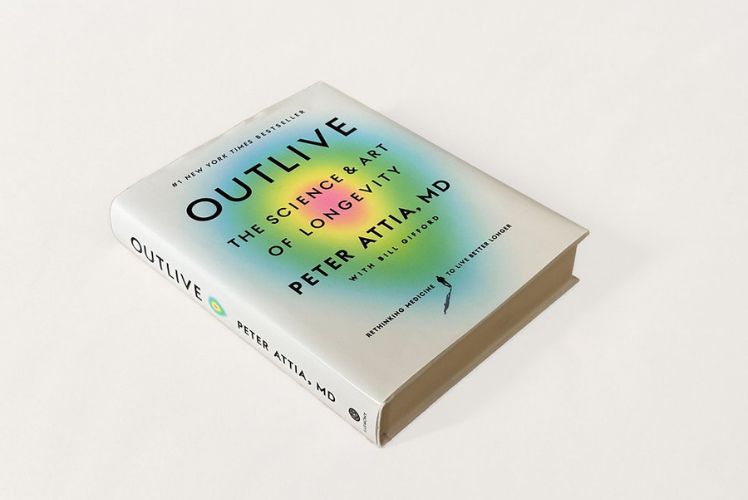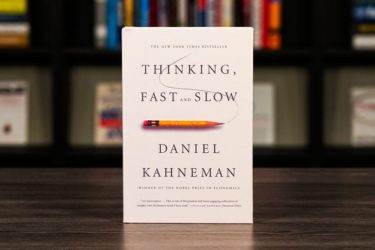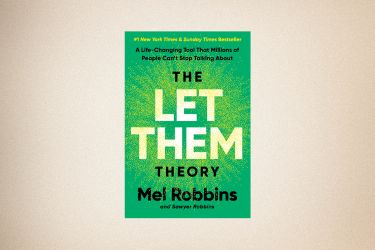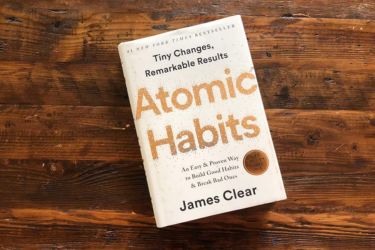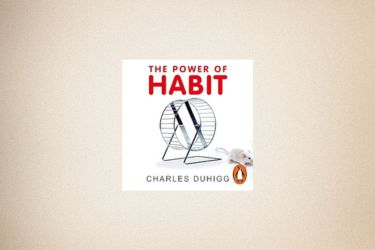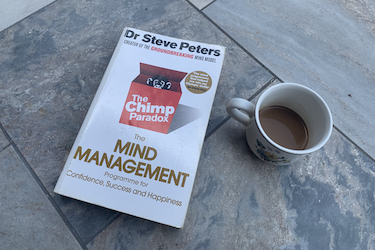Most people want to live longer, but few understand how to truly extend both their lifespan and quality of life. Dr Peter Attia's "Outlive: The Science and Art of Longevity" tackles this challenge head-on, offering a comprehensive guide that goes beyond typical health advice to explore the cutting-edge science of aging.
This book revolutionises how we think about health by introducing Medicine 3.0, a proactive approach that focuses on preventing age-related diseases decades before they appear. Unlike traditional medical approaches that treat illness after it occurs, Attia's framework emphasises optimising metabolic health, exercise, sleep, and emotional wellbeing as interconnected pillars of longevity.
We found this 411-page exploration particularly compelling because it combines rigorous scientific research with practical strategies that readers can implement immediately. The book doesn't just promise a longer life—it provides evidence-based methods for maintaining vitality and health span well into our later years.
Key Takeaways
- Medicine 3.0 focuses on preventing chronic diseases through proactive health optimisation rather than reactive treatment
- The four pillars of longevity include exercise, nutrition, sleep, and emotional health working together as an integrated system
- Metabolic health serves as the foundation for preventing major age-related diseases like diabetes, cardiovascular disease, and cancer
Overview of Outlive: The Science and Art of Longevity
Dr Peter Attia combines medical expertise with practical guidance to challenge traditional approaches to ageing, focusing on extending both lifespan and healthspan through science-based strategies.
Purpose and Author Background
Dr Peter Attia brings unique qualifications to the field of longevity medicine. He trained at Stanford University School of Medicine and worked as a surgical oncologist before shifting his focus to preventive medicine.
His medical background spans multiple specialties. He completed surgical training and later studied nutrition and metabolic health. This diverse experience shapes his approach to longevity science.
Attia's credentials include:
- Medical degree from Stanford
- Surgical oncology training
- Research in nutrition and metabolism
- Founder of Early Medical practice
The book aims to help readers live longer and healthier lives. Attia challenges conventional medical wisdom that focuses on treating disease rather than preventing it. He argues we should start thinking about longevity decades before traditional medicine typically intervenes.
His approach emphasises personalised medicine. Rather than one-size-fits-all recommendations, he advocates for individualised strategies based on genetics, lifestyle, and risk factors.
Key Themes and Structure
The book divides longevity into two critical concepts: lifespan and healthspan. Lifespan refers to how long we live, while healthspan measures how many years we remain healthy and functional.
Attia structures his approach around what he calls "Medicine 3.0." This framework shifts focus from reactive treatment to proactive prevention. It emphasises early intervention and personalised risk assessment.
Core themes include:
- Exercise as the most powerful longevity tool
- Nutritional strategies for metabolic health
- Sleep optimisation and stress management
- Emotional and mental wellbeing
The book addresses four main causes of death in developed countries. These include cardiovascular disease, cancer, neurodegenerative diseases, and metabolic dysfunction. Attia provides specific strategies for preventing each category.
His writing combines scientific research with practical applications. The book includes detailed explanations of complex biological processes alongside actionable advice readers can implement immediately.
The Medicine 3.0 Approach to Longevity
Peter Attia introduces Medicine 3.0 as a revolutionary shift that focuses on early intervention and prevention rather than treating diseases after they occur. This approach emphasises personalised strategies and lifestyle changes to address health issues before they take root in our bodies.
Contrasts with Medicine 2.0
Medicine 2.0 represents our current healthcare system that waits for diseases to develop before taking action. We typically visit doctors when we're already ill and receive treatments after symptoms appear.
Medicine 3.0 takes a completely different approach. It focuses on preventing chronic illnesses before they start rather than treating them after diagnosis.
Key differences include:
- Timing: Medicine 2.0 reacts to disease; Medicine 3.0 prevents it
- Focus: Traditional medicine treats symptoms; Medicine 3.0 addresses root causes
- Approach: Current healthcare is standardised; Medicine 3.0 is personalised
This shift means we don't wait for heart disease, diabetes, or cancer to develop. Instead, we identify risk factors decades earlier and take action to prevent these conditions from occurring.
Personalisation and Prevention
Medicine 3.0 recognises that each person ages differently and faces unique health risks. We need individualised strategies based on our genetics, lifestyle, and current health status.
Prevention becomes the primary focus through targeted lifestyle changes. This includes specific exercise routines, nutritional plans, and monitoring systems tailored to each person's needs.
Core elements of personalised prevention:
- Regular biomarker testing to track health changes
- Customised fitness programmes based on individual capabilities
- Nutritional strategies that match personal metabolic profiles
- Early detection screening for age-related diseases
Peter Attia argues that this proactive approach can significantly extend both our lifespan and healthspan. By intervening early, we can maintain our physical and mental capabilities well into our later years rather than simply adding years to our lives.
Core Pillars of Health and Longevity
Peter Attia identifies four essential pillars that form the foundation of longevity: exercise, nutrition, sleep, and emotional health. These pillars work together to optimise our healthspan and give us the best chance of living longer, healthier lives.
Exercise and Strength Training
Exercise stands as the most powerful tool we have for extending both lifespan and healthspan. Attia emphasises that we need both cardiovascular fitness and strength training to maximise longevity benefits.
Cardiovascular fitness centres on improving our VO2 max - the maximum amount of oxygen our bodies can use during exercise. Higher VO2 max levels strongly predict longer life. We should aim for a mix of steady-state cardio and high-intensity intervals.
Strength training becomes crucial as we age. Muscle mass naturally declines after age 30, leading to frailty and increased injury risk. Regular resistance training helps maintain bone density, muscle mass, and functional movement patterns.
The key is consistency rather than intensity. We need at least 150 minutes of moderate exercise weekly, plus two strength training sessions. This combination helps prevent the chronic diseases that typically shorten our lives.
Nutrition and Dietary Principles
Nutrition forms a complex pillar where individual needs vary significantly. Attia moves beyond simple dietary rules to focus on nutritional biochemistry and metabolic health.
Protein intake takes priority, especially as we age. We need adequate protein to maintain muscle mass and support cellular repair processes. Aim for 1.6-2.2 grams per kilogram of body weight daily.
Metabolic flexibility matters more than specific diets. Our bodies should efficiently switch between burning glucose and fat for fuel. This flexibility often improves through strategic fasting periods and reducing processed foods.
Caloric restriction shows promise for longevity, but extreme dieting can backfire. Moderate calorie control combined with nutrient density works better than severe restrictions. We should focus on whole foods whilst avoiding ultra-processed options that disrupt metabolic function.
Sleep Optimisation
Sleep directly impacts every aspect of our health, yet most people underestimate its importance for longevity. Poor sleep accelerates ageing and increases disease risk across all major health conditions.
Sleep quality matters as much as duration. We need deep sleep for cellular repair and memory consolidation. Adults should aim for 7-9 hours nightly, with consistent bedtimes and wake times.
Sleep hygiene practices significantly improve rest quality. Keep bedrooms cool and dark, avoid screens before bed, and limit caffeine after 2 PM. These simple changes often produce dramatic improvements.
Sleep disorders like sleep apnoea require medical attention. Untreated sleep problems create chronic inflammation and stress that directly shorten lifespan. Professional evaluation becomes essential when basic sleep hygiene fails to improve rest quality.
Metabolic Health and Disease Prevention
Dr. Attia emphasises that metabolic dysfunction sits at the core of many chronic diseases, making it one of the most critical areas for prevention. The book provides clear guidance on understanding key metabolic markers and addressing conditions like diabetes and obesity through targeted interventions.
Metabolic Syndrome and Diabetes
Metabolic syndrome represents a cluster of conditions that significantly increase our risk of heart disease, stroke, and type 2 diabetes. We must recognise that this syndrome affects nearly one-third of adults and serves as a warning sign of deteriorating metabolic health.
The condition develops when we have at least three of these risk factors:
- High blood pressure (130/85 mmHg or higher)
- High fasting glucose (100 mg/dL or higher)
- Low HDL cholesterol (below 40 mg/dL for men, below 50 mg/dL for women)
- High triglycerides (150 mg/dL or higher)
- Excess abdominal fat (waist circumference over 40 inches for men, 35 inches for women)
Attia stresses that metabolic syndrome often progresses silently for years. We can reverse many of these markers through lifestyle changes focused on diet, exercise, and weight management.
Type 2 diabetes represents the advanced stage of metabolic dysfunction. Early intervention becomes crucial before we reach this point.
Markers: Insulin, Glucose, Triglycerides, and HDL Cholesterol
Understanding our metabolic markers helps us assess disease risk and track progress. Attia recommends regular monitoring of these key indicators to maintain optimal metabolic health.
Fasting glucose should remain below 100 mg/dL, though Attia suggests aiming for levels closer to 90 mg/dL for optimal health. Consistently elevated glucose indicates our cells are becoming resistant to insulin.
Insulin levels provide crucial insights into metabolic function. High fasting insulin suggests insulin resistance, even when glucose appears normal. We should target fasting insulin levels below 10 μU/mL.
Triglycerides reflect how well we process fats and carbohydrates. Optimal levels stay below 100 mg/dL, with levels above 150 mg/dL indicating metabolic dysfunction.
HDL cholesterol acts as our protective cholesterol. Men should maintain levels above 40 mg/dL, whilst women need levels above 50 mg/dL. Low HDL cholesterol increases cardiovascular risk significantly.
These markers work together to paint a complete picture of our metabolic state.
Obesity and Insulin Resistance
Obesity and insulin resistance create a dangerous cycle that accelerates metabolic dysfunction. We must understand that excess body fat, particularly around the abdomen, directly contributes to insulin resistance and chronic inflammation.
Insulin resistance occurs when our cells stop responding properly to insulin signals. This forces the pancreas to produce more insulin to maintain normal blood sugar levels. Over time, this system becomes overwhelmed.
Visceral fat poses the greatest metabolic threat. This deep abdominal fat releases inflammatory compounds that worsen insulin resistance. Even people with normal weight can develop metabolic problems if they carry excess visceral fat.
Attia emphasises that we can improve insulin sensitivity through:
- Regular exercise (both strength training and cardiovascular activity)
- Weight loss (even modest reductions help significantly)
- Improved sleep quality
- Stress management
Breaking the obesity-insulin resistance cycle requires sustained lifestyle changes rather than quick fixes.
The Role of Chronic Diseases in Lifespan
Chronic diseases significantly reduce our lifespan and healthspan by causing cellular damage and organ dysfunction over time. These conditions develop gradually and often remain undetected until they reach advanced stages.
Heart Disease and Cardiovascular Risk
Heart disease remains the leading cause of death worldwide. It affects our lifespan by damaging blood vessels and reducing oxygen delivery to vital organs.
Key risk factors include:
- High blood pressure
- Elevated cholesterol levels
- Diabetes
- Smoking
- Sedentary lifestyle
Cardiovascular disease develops through atherosclerosis. This process involves plaque buildup in our arteries.
The plaque narrows blood vessels and restricts blood flow. Eventually, this can lead to heart attacks or strokes.
We can reduce our risk through regular exercise and proper nutrition. Managing stress levels also plays a crucial role.
Blood pressure monitoring helps detect problems early. Many people have high blood pressure without symptoms.
Cancer Prevention Tactics
Cancer impacts our lifespan by causing uncontrolled cell growth. These abnormal cells invade healthy tissues and organs.
Primary prevention strategies include:
- Avoiding tobacco products
- Limiting alcohol consumption
- Maintaining healthy weight
- Regular physical activity
- Sun protection
Diet plays a significant role in cancer prevention. We should eat plenty of fruits and vegetables.
Processed meats increase cancer risk. Red meat should be consumed in moderation.
Regular screening helps detect cancer early. Early detection improves treatment outcomes significantly.
Some cancers have genetic components. Family history increases our risk for certain types.
Environmental factors also contribute to cancer development. We can reduce exposure to known carcinogens.
Neurodegenerative Disease Considerations
Neurodegenerative diseases affect our brain function and lifespan. These conditions cause progressive loss of neurons.
Alzheimer's disease is the most common form. It causes memory loss and cognitive decline.
Protective factors include:
- Regular mental stimulation
- Social engagement
- Physical exercise
- Quality sleep
- Mediterranean diet
Sleep quality affects brain health significantly. Poor sleep increases neurodegenerative disease risk.
We can protect our brains through lifelong learning. Reading and puzzles help maintain cognitive function.
Social connections also play important roles. Isolation increases our risk of cognitive decline.
Exercise improves blood flow to the brain. It also promotes new brain cell growth.
Some risk factors cannot be changed. Age and genetics influence our susceptibility to these diseases.
Emotional Health and Lifestyle Change
Emotional wellbeing plays a crucial role in healthy ageing, whilst behavioural modifications can significantly impact our longevity and quality of life.
Importance of Emotional Wellbeing
Our emotional health directly affects how we age. Research shows that chronic stress, depression, and anxiety accelerate cellular ageing processes.
Mental health challenges create physical changes in our bodies. They increase inflammation and weaken our immune systems. This makes us more vulnerable to chronic diseases.
Key emotional health factors include:
- Stress management techniques
- Social connections and relationships
- Purpose and meaning in daily life
- Resilience building practices
We must address emotional health with the same urgency as physical fitness. Poor mental health can undo the benefits of exercise and good nutrition.
Studies demonstrate that people with strong social bonds live longer. They also experience less cognitive decline as they age.
Regular meditation and mindfulness practices reduce cortisol levels. These techniques help regulate our stress response system.
Behavioural Change for Healthy Ageing
Lifestyle changes require consistent effort and realistic goal-setting. We cannot transform decades of habits overnight.
The most effective approach focuses on small, manageable adjustments. These build momentum towards larger transformations over time.
Priority lifestyle changes include:
- Establishing regular sleep schedules
- Creating sustainable exercise routines
- Building nutritious eating patterns
- Developing stress reduction habits
We must view these changes as investments in our future selves. Each positive choice compounds over years and decades.
Environmental modifications support behavioural change. We can remove temptations and create supportive surroundings for healthy choices.
Tracking progress helps maintain motivation during difficult periods. Simple measurement tools show us tangible improvements in our health markers.
Professional support often proves essential for lasting change. Healthcare providers, therapists, and coaches provide guidance and accountability throughout our journey.
Frequently Asked Questions
Readers often have specific questions about Dr Peter Attia's approach to longevity science and how his book applies to real-world health decisions. The following addresses common queries about the book's core principles, scientific foundation, and practical applications.
What are the key principles of longevity discussed in 'Outlive'?
The book centres on what Attia calls "Medicine 3.0" - a preventative approach that shifts focus from treating disease to optimising healthspan. This framework emphasises acting before symptoms appear rather than waiting for illness to develop.
Exercise forms the foundation of Attia's longevity strategy. He breaks physical activity into four pillars: cardiovascular fitness, strength training, stability work, and metabolic health maintenance.
Nutrition plays a crucial role, though Attia avoids promoting single dietary approaches. Instead, he focuses on metabolic health markers and individualised eating patterns that support long-term wellbeing.
Sleep quality receives significant attention as a non-negotiable factor for longevity. The book details how proper sleep affects everything from hormone regulation to cellular repair processes.
How does 'Outlive' integrate scientific research with practical advice on extending lifespan?
Attia combines peer-reviewed research with clinical experience from his medical practice. He translates complex biochemical processes into actionable recommendations that readers can implement.
The book provides specific exercise protocols backed by longevity research. Rather than vague fitness advice, Attia offers detailed workout structures with scientific justification for each component.
Laboratory testing recommendations help readers track biomarkers associated with healthy ageing. The book explains which tests matter most and how to interpret results for personalised health optimisation.
Attia includes case studies from his patients to demonstrate how scientific principles apply in real situations. These examples show both successes and challenges in implementing longevity strategies.
What aspects of 'Outlive' have been critiqued in major newspaper reviews?
Some reviewers have questioned the book's accessibility for general readers. The dense scientific content may overwhelm those without medical or scientific backgrounds.
Critics have noted that many recommendations require significant financial resources. Access to specialised testing, personal trainers, and premium supplements creates barriers for average readers.
The book's length - 411 pages - has been cited as potentially intimidating. Some reviewers suggest the core concepts could have been communicated more concisely.
Certain reviewers have pointed out limited discussion of socioeconomic factors that affect longevity. The focus on individual optimisation may not address broader health determinants.
Can you summarise the main findings and recommendations presented in 'Outlive'?
Cardiovascular fitness emerges as the strongest predictor of longevity in the book. Attia argues that aerobic capacity matters more than most people realise for long-term survival.
Strength training becomes increasingly important with age to prevent muscle loss and maintain independence. The book recommends specific resistance training protocols for different life stages.
Metabolic health requires constant attention through diet and exercise. Attia emphasises blood sugar control and insulin sensitivity as key longevity factors.
Sleep quality directly impacts all other health interventions. The book provides detailed sleep optimisation strategies based on circadian rhythm research.
Stress management and emotional health receive equal weight with physical interventions. Attia discusses how psychological wellbeing affects biological ageing processes.
How does 'Outlive' differ from other books on the topic of longevity and lifestyle?
The book takes a more medical and scientific approach compared to popular wellness books. Attia relies heavily on peer-reviewed research rather than anecdotal evidence or trending health fads.
Unlike books that promote single solutions, 'Outlive' presents longevity as requiring multiple integrated approaches. The framework acknowledges complexity rather than offering simple fixes.
The exercise recommendations go beyond basic fitness advice. Attia provides specific training protocols designed for longevity rather than general health or appearance goals.
The book challenges conventional medical wisdom about ageing. Rather than accepting decline as inevitable, Attia argues for proactive intervention decades before problems typically appear.
What reader demographics is 'Outlive' best suited for, according to community reviews?
The book appeals most to readers with existing interest in health optimisation and biohacking. Those already tracking biomarkers or following detailed fitness regimens find the content most applicable.
Middle-aged professionals represent a core audience, particularly those with resources to implement comprehensive health strategies. The preventative approach resonates with people planning for long-term wellbeing.
Healthcare professionals and fitness enthusiasts appreciate the scientific depth. The detailed research citations and technical explanations satisfy readers seeking evidence-based recommendations.
Readers seeking quick fixes or simple lifestyle changes may find the book overwhelming. The comprehensive approach requires significant commitment and lifestyle modification to implement effectively.

